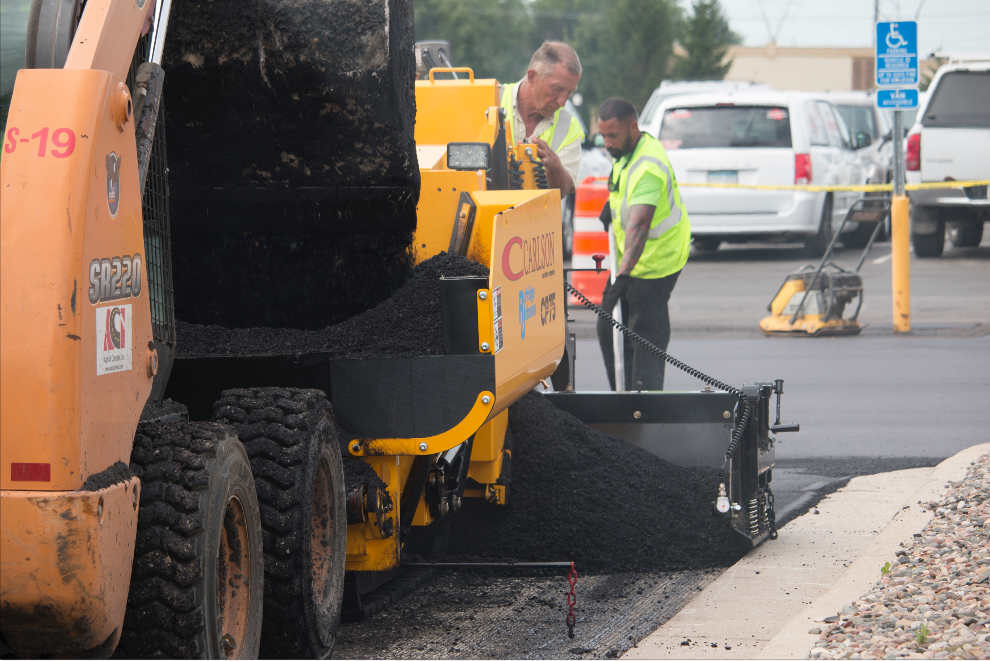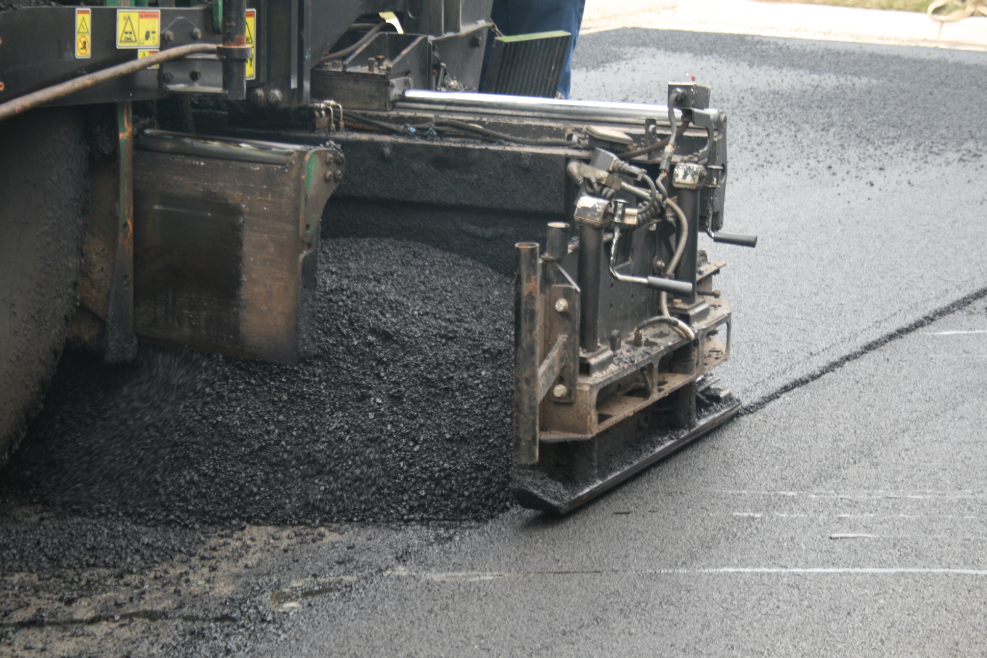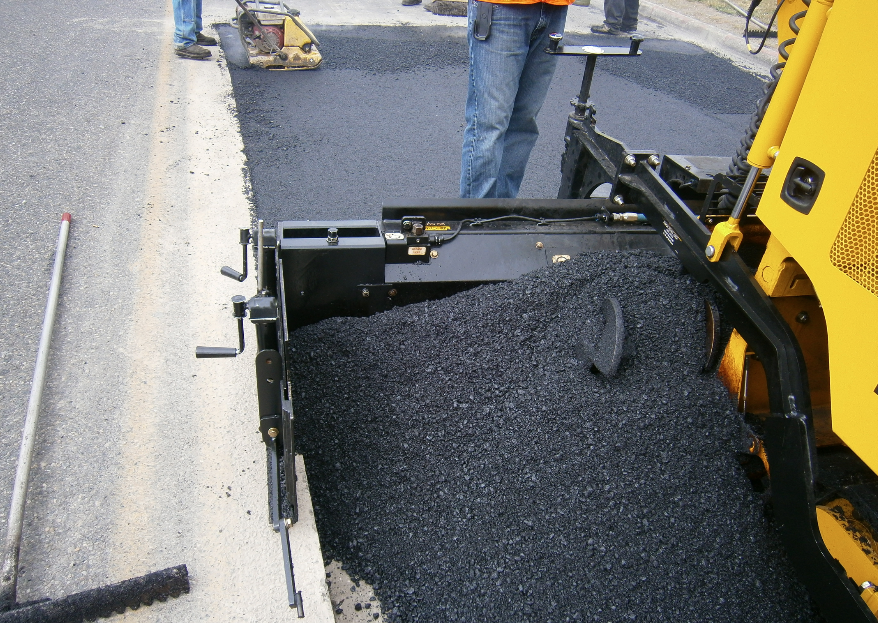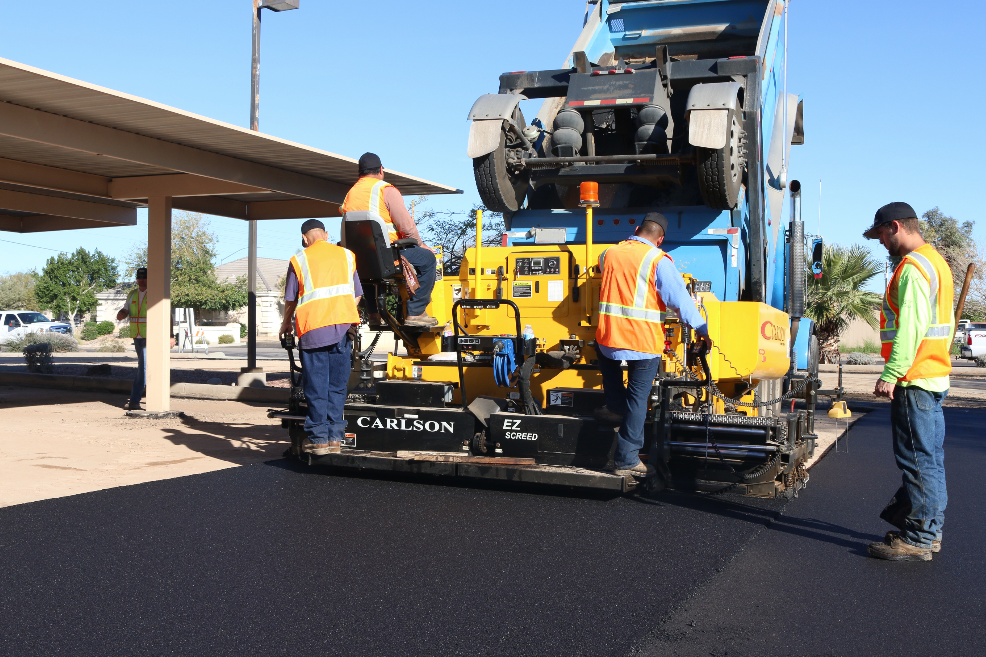Control Higher Mat Quality with a Focus on Paving Basics
BY Travis Colwell

Just as the fundamentals are imperative to having a solid foundation for success in athletics, so too can the reminder of fundamentals have positive impacts on your paving performance.
It is fundamentally important that the screed is set up properly, with the right amount of slope and amount of angle of attack to compliment the depth of the mat. Just as operators must check their machinery for proper levels of fuel and oil everyday, they should also check to ensure their screeds are level and aligned. Prior to the day’s start and with the screed plates cleaned, operators should stringline the rear edge of the machine to check for flatness and to preset the crown in the main extension. Once that is done, stringline the front edge of the main plate to check for lead crown.
In addition to the daily stringlining of your machine to ensure appropriate leveling, contractors should also include quick examinations for alignment issues. These checks should include checking the parallel of the extension to the main, the extension angle of attack (or preset the angle of attack prior to starting the job), and extension height (or preset extension height prior to starting the job). By checking that the screed is both aligned and level before the start of the day, contractors can make the necessary adjustments to produce high quality results for their customers.

The use of tunnels lets the crew move material to the endgate.
Set Quality at Standard Widths
While the leveling of the screed is a fundamental preparation for the day’s job, there are many basic principles while paving that serve as a foundation for exceptional mat quality. First, it should be said that the use of sonic sensors in lieu of manual feed are essential for uniform mat quality. A person cannot match the ability that sonic sensors can for ensuring uniform head of material. An available option for most commercial pavers, a small investment in sonic sensors can pay dividends in higher mat quality and better looking, longer lasting pavement.
Technology may aid in higher mat quality, yet the human element still has a part to play in terms of paving performance. For even head of material, contractors should regulate their conveyor and auger speed accordingly to the paving speed and material delivery. Paving speed is dictated by material delivery, rate of compaction and speed of labor, meaning that substantial planning and understanding must go into every job for higher quality mats.
For material delivery, take time to know the routes from the plant to the jobsite, the traffic situation and any other variables so that trucks are able to deliver for continuous paving. When the paver must sit and wait for trucks, the impacts to the mat quality and aesthetics are impacted as the screed and material get cold. This will also negatively affect density figures as the material becomes less malleable as it cools, potentially leading to premature failure of the pavement. So too will out-running rollers have a negative impact on mat quality. By setting the paving speed to equal the labor force working the material and to compaction, contractors are able to maximize density and mat quality.

If the job requires 14- or 12-foot passes all day, the use of bolt-on tunnel and auger extensions will make the job easier. Without auger extensions, the team risks flooding the main screed with material while starving the extensions. Without tunnels, material could flow forward and damage the tracks due to the size of excess head of material.
Set Quality at Wide Widths
Just as with paving at standard widths, paving at wide widths is as much about proper planning as it is paving at the right speed. But where wider width paving departs in it similarities is in the tools that contractors can use to ensure an even flow of material toward the endgates. Depending on the type of paver and screed, contractors are able to use attachments such as tunnels, either bolt-on or power extendable, cut-off shoes and auger extensions.
In planning out the use of these attachments, it is necessary that they be applied to the correct job. For example, if contractors are pulling 15-foot passes all day, the use of bolt-on tunnel and auger extensions are highly recommended. Without auger extensions, contractors risk flooding the main screed with material while starving the extensions. And without tunnels, material could flow forward and damage the tracks due to the size of excess head of material.
However, should the job have variable width paving, the use of these attachments can create issues due to the inability of running the extensions fully inboard. When the paver does have to stretch out to its full width, contractors are able to use the machine’s damper doors should their platform be equipped with them. In vertical and horizontal configurations, contractors are able to close their damper doors more the further out they pave. For instance, on an 8-foot screed paving at 8 feet, the contractor will keep the damper doors fully open to allow material to drop in front of the main screed. When paving at 15 feet, the contractor will close the door up to three-quarters of the way or more, forcing more material outboard toward the endgate, while maintaining an even head of material across the full width of paving.

By checking that the screed is both aligned and level before the start of the day, contractors can make the necessary adjustments to produce high quality results for their customers.
